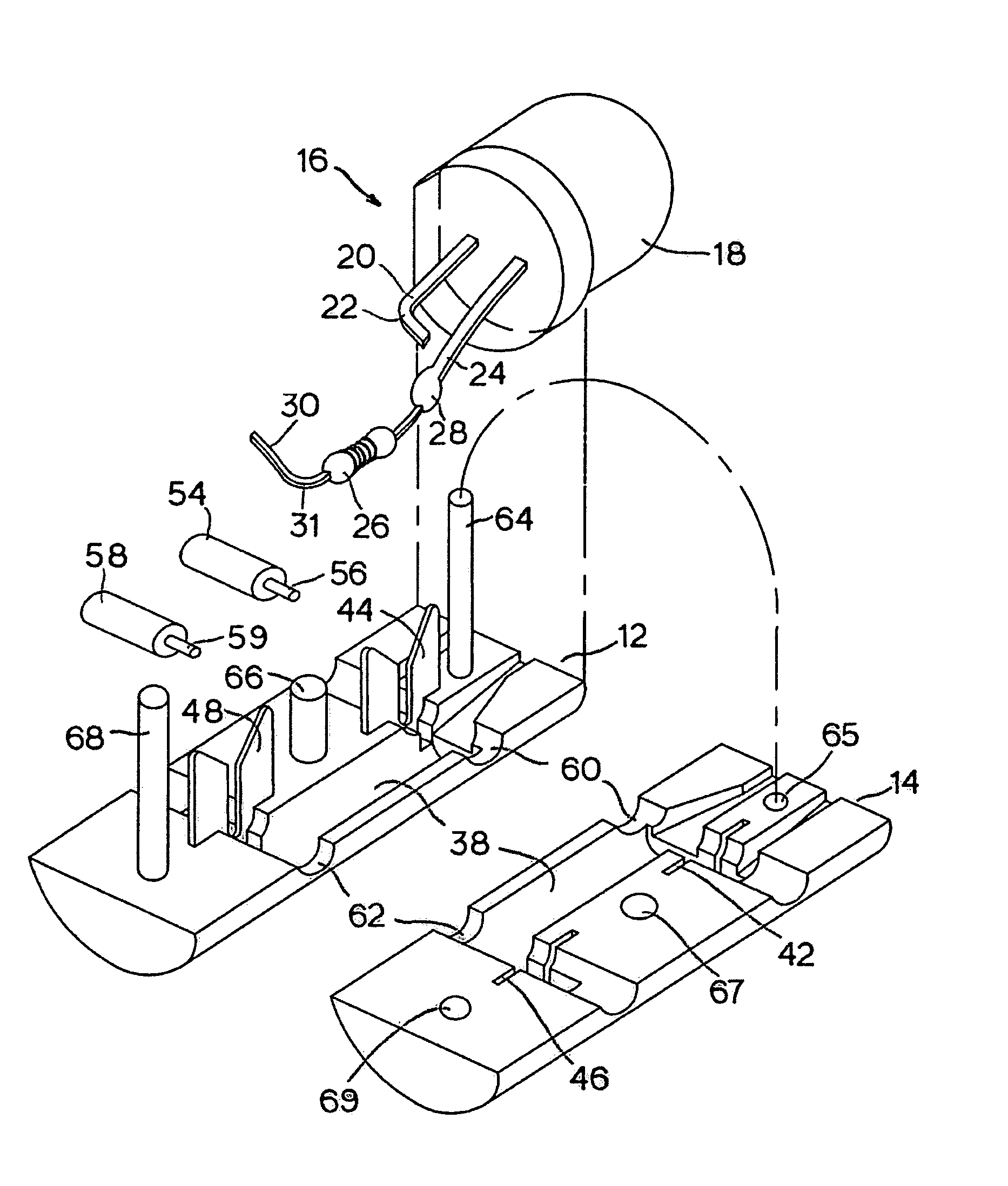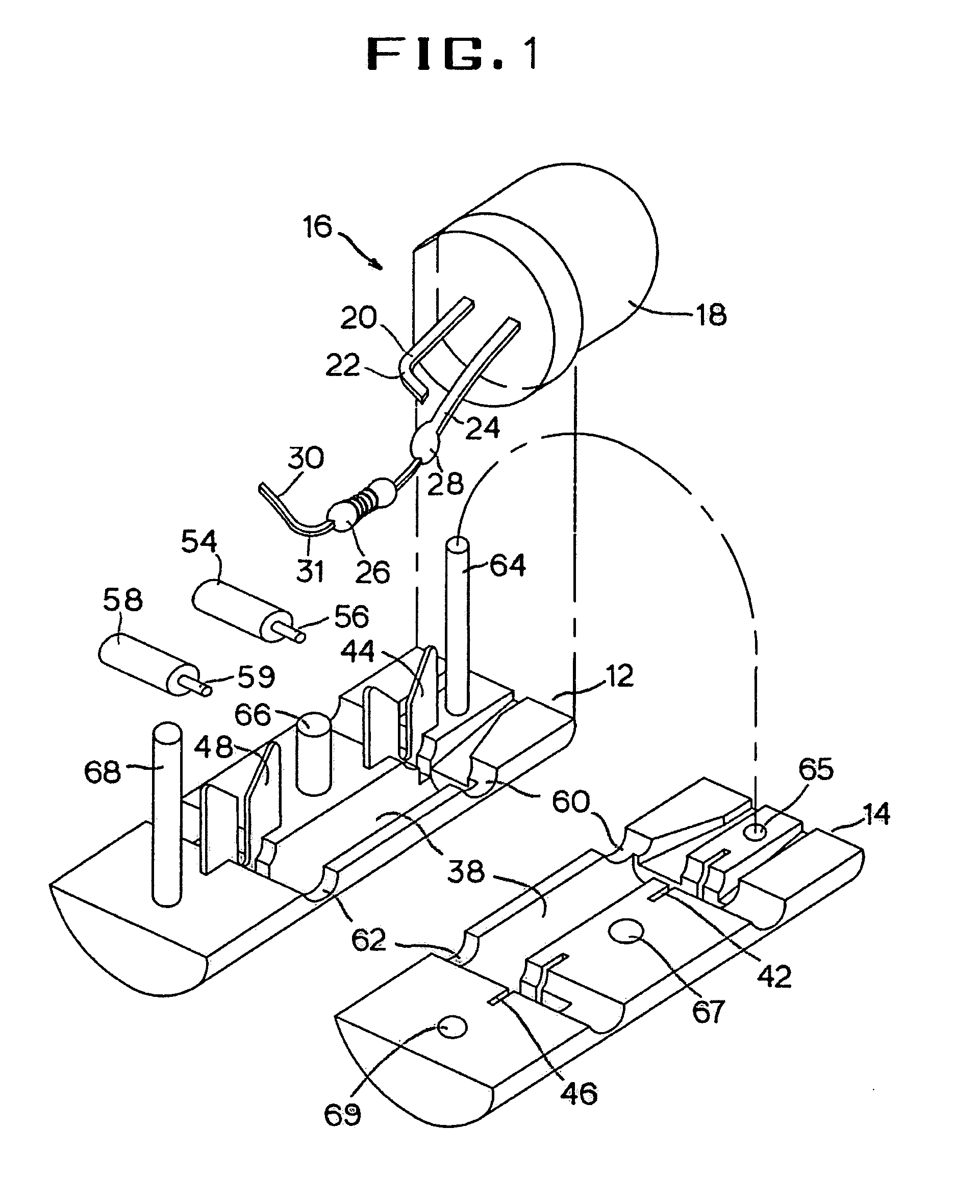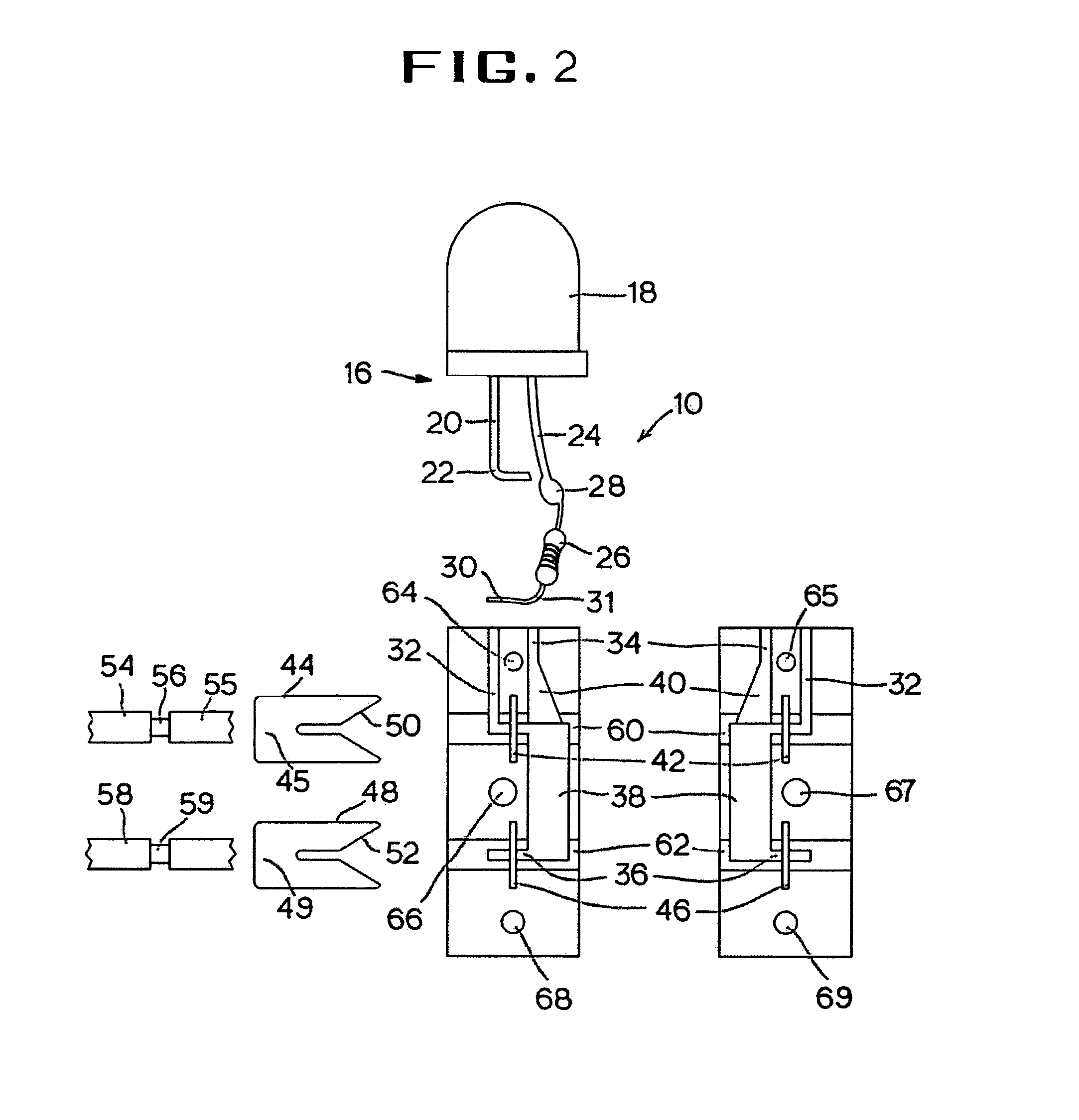LED connector
a technology of led connectors and connectors, applied in the direction of electrical equipment, contact members penetrating/cutting insulation/cable strands, coupling device connections, etc., can solve the problems of not providing led arrays, inability to array leds in necessary lateral proximity, and conventional connectors are quite expensive compared to achieve the effect of enhancing the orientation correction featur
- Summary
- Abstract
- Description
- Claims
- Application Information
AI Technical Summary
Benefits of technology
Problems solved by technology
Method used
Image
Examples
Embodiment Construction
[0027]Referring to FIG. 1, the LED connector 10 mainly comprises a first half section 12 and a second half section 14 forming together a round column having flat top and bottom ends and its cross sectional area no larger than that of a lamp 16. The connector halves 12 and 14 have generally flat opposing surfaces, which come into full contact with each other when they are assembled.
[0028]The lamp 16 has an LED 18 in the shape of a solid dome with an annular flat bottom and a pair of leads extending outwardly from the flat bottom. A first lead 20 is prepared for electrical connection with a bend22 formed at a predetermined distance near its distal end. A second lead 24 may have a resister 26 soldered at a point 28 to its distal end to supply a regulated electric current to the LED 18. The second lead 24 is prepared for electrical connection via a bend 30 formed at a free lead 31 of the resister 26, which will be scrutinized in further detail below.
[0029]To retain the lead 20, on the i...
PUM
 Login to View More
Login to View More Abstract
Description
Claims
Application Information
 Login to View More
Login to View More - R&D
- Intellectual Property
- Life Sciences
- Materials
- Tech Scout
- Unparalleled Data Quality
- Higher Quality Content
- 60% Fewer Hallucinations
Browse by: Latest US Patents, China's latest patents, Technical Efficacy Thesaurus, Application Domain, Technology Topic, Popular Technical Reports.
© 2025 PatSnap. All rights reserved.Legal|Privacy policy|Modern Slavery Act Transparency Statement|Sitemap|About US| Contact US: help@patsnap.com



